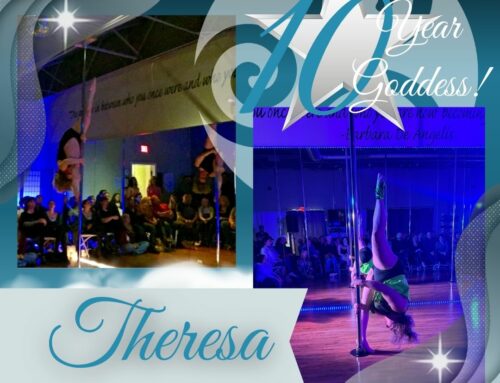Heard about pole fitness, but not sure if you’re ready to take the leap? Or maybe you’re just starting out, but looking for some tips for your new pursuit? Well, keep on reading to learn more about the pole fitness world!
What is involved in pole fitness?
Above all, pole fitness is intended to be a fun way to get your workout in. It has tons of other benefits, including increasing confidence – think of how proud you’ll be when you nail a new trick! (Learn about additional benefits here!) There are also many different styles of pole fitness. It merges dance with athleticism and can be very empowering. While pole is typically associated with exotic dancing, it doesn’t have to be. You can bring your own style and flair to pole dancing, whether it’s sexy and sultry, dramatic, ballet-inspired, strength and athletic-based, or anything else your heart desires! You can make it what you want it to be and dance in a way that feels natural to you.
At this point, you might be thinking that a dance background is needed. This is not the case! No prior fitness, gymnastics, or dance experience is required. Pole fitness can be for anyone.
What can I expect in a pole fitness class?
At RGF, we have a mindful progression of tricks that helps to set you up for success. Students start off by learning and mastering the fundamentals before advancing and increasing the difficulty of moves. You can expect to learn moves of all types, including floorwork, spins, accents, pole sits, and climbs. The beginning classes play an important role in building up your strength and conditioning your body. You’ll learn how to combine moves into a flow which helps to increase your endurance. As you progress and get comfortable with the pole, you’ll start learning more aerial tricks and basic inversions.
What should I wear?
In pole fitness, bare skin provides the best grip on the pole. If you’re just starting out, capri length yoga pants and a t-shirt or tank top work just fine. Having your calves exposed will allow you to get a better grip on the pole as you learn the fundamentals.
As you progress, you’ll need to start wearing shorts to allow for climbing. Your instructor will generally let you know in advance when you will start working on climbing so that you can be prepared.
How do I get the best pole grip?
How well you stick to the pole can be influenced by a variety of factors, including:
- The temperature – Poles are much more sticky when they have been warmed up. In class, you’ll typically work on flows and accents that will start getting the pole warm, before going into aerial tricks.
- Your skin – Some people have dry skin, others tend to get sweaty. All can influence how well you stick (or slide) on the pole. Also, make sure not to apply lotion before class. The oil in most lotions can cause you to be extra slippery. In addition, grip aids can help to improve your grip. There are so many different types, but some of the popular ones include Dry Hands, iTac, Dew Point, and Girlie Grip.
- How clean it is – The use of grip aids can leave residue on the pole. Some people prefer this as it helps them stick to the pole, others prefer a clean pole. In class, we have microfiber cloths and an alcohol-based cleaning solution that can be used to wipe the poles down.
Ready to get started with your pole fitness journey? Take a look at our new student specials!


